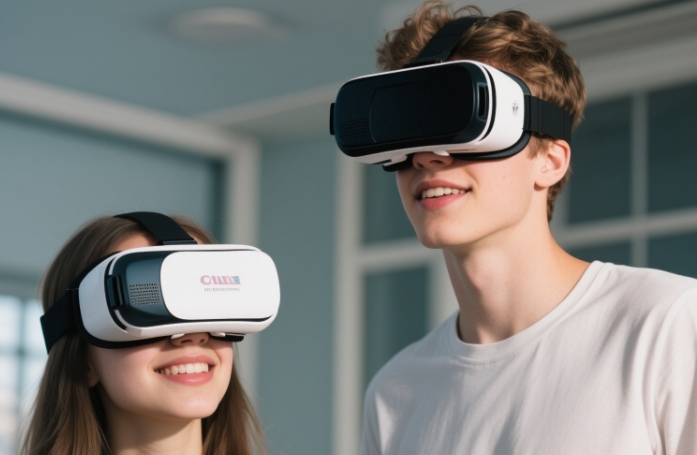




2025-04-22
In recent years, the market scale of OLED - on - silicon Display has been growing steadily. According to a report by the market research institution DSCC, the global sales of the silicon-based OLED market exceeded $1.3 billion in 2023. Data from Sigmaintell indicates that the number of silicon-based OLED screens used in global XR headsets exceeded 1.5 million in 2022, and it is expected that the market demand will continue to expand by 2027.
The launch of Apple's Vision Pro has further promoted the application of OLEDOS, and other manufacturers have also started to follow Apple's strategy. In the early days, companies such as Emagin, Kopin, Micro-OLED (France), Fraunhofer IPMS, and Med took the leading position in this field. Later, Chinese manufacturers actively laid out silicon-based OLED production lines, and their competitiveness has been increasingly enhanced. OLED Microdisplay VS Fast-LCD: The Comprehensive Comparison in 5 Aspects
Why is OLED - on - silicon Display the most suitable for application in VR/AR/MR wearable devices? The main reasons are as follows.

The display screens applied in VR/AR/MR wearable devices need to achieve performance such as high pixel density and high refresh rate, and OLEDOS Display perfectly meets these requirements (with an extremely high pixel density (PPI), which can even reach 615 microns).
Nowadays, the most well-known example of Micro OLED Display is the launch of Apple's Vision Pro in the market. Apple's Vision Pro is equipped with a silicon-based OLED screen, which can achieve a binocular 8K resolution, with a PPD of approximately 3540, and has an extremely high pixel density.
A long time ago, due to the cost and technical limitations of display technology, the sense of virtual reality of VR/AR/MR devices did not meet people's expectations. Now, the contrast ratio of OLED - on - silicon can be as high as 101 million : 1, which can present deep blacks and bright whites, making the images more realistic. When consumers use VR/AR/MR devices, they will have an immersive and realistic experience.
In order to further enhance the realism of VR products, Micro OLED Display with good optical properties can provide a wider viewing angle and higher transparency. When users wear VR/AR/MR devices, they can clearly see stunning images from any angle. The transparency of some OLED - on - silicon displays reaches 50%, which will make the images more natural.
The VR/AR/MR devices in the early laboratories were not only costly, but also had the biggest problem - they were large in size and heavy in weight, making it extremely inconvenient for consumers to wear.
Therefore, scientists have been researching micro-display technologies that are thinner, lighter, and more compact, so that consumers can wear them more easily and can wear the devices for a long time without feeling fatigued.
Silicon-based OLED Display is an advanced micro-display. Its thin and light design is unique: using single-crystal silicon semiconductors as the substrate, manufacturers integrate a large number of driving circuits on its surface, reducing the volume by multiples.
For devices that require a display screen, the power consumption mainly comes from the energy consumed when the display screen emits light.
OLED - on - silicon adopts self-luminous technology and only emits light when powered on. When displaying black, it is in a non-operating state, so it does not consume electricity, which is more energy-efficient than FastLCD that requires a backlight. The liquid crystal molecules of FastLCD itself do not emit light. When displaying a black image, its backlight is still working and consuming energy.
Moreover, while maintaining low power consumption, it can also have excellent image display performance, effectively extending the battery life of VR/AR/MR devices.
Laboratory data statistics show that compared with products using Fast LCD screens, VR headsets using OLED - on - silicon screens can run for at least 30% longer with the same battery capacity. This also means that if the same battery life is required, the batteries of devices equipped with OLED - on - silicon are lighter in weight.
Compared with emerging technologies such as Micro LED, the technology of OLED - on - silicon is more mature, and large-scale mass production has been achieved, reducing the average manufacturing cost. This means that for downstream device manufacturers, they can reduce production costs, so that every consumer can afford to buy the products.
Moreover, the yield rate of OLED - on - silicon is already very high, and it is very reliable in the application of AR devices. In addition, with the expansion of the market scale, the production cost of OLED - on - silicon is gradually decreasing, which helps to promote the market popularity of VR/AR/MR devices.
With its exclusive FSL technology, MOT provides global manufacturers with solutions that combine high performance, low power consumption and cost-effectiveness. MOT display technology: high-performance and low-cost micro-OLED solution
Contact:https://www.micro-oledtech.com/contact/
Why is OLED - on - silicon Display the most suitable for application in VR/AR/MR wearable devices? This article has fully answered this question from four aspects. Let's summarize: the resolution and clarity of traditional LCD and LED displays are not suitable for near-eye display devices, which are large devices used by people in daily life, such as commercial LED Wall rentals or advertising screens. If you need to purchase a silicon-based OLED display screen with a higher cost-performance ratio, you are welcome to contact us.